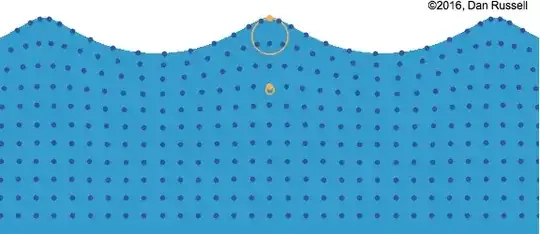What is the shape of the surface of the water in the animation below?
Clearly, the dots that compose the surface are following a sinusoidal path. The curve isn't a simple sine wave, since the peaks of the waves curve much more sharply than the troughs. Neither is it
$$y = \left |\sin (\theta) \right |$$
Since that has cusps at the zero crossings of the sine wave.
